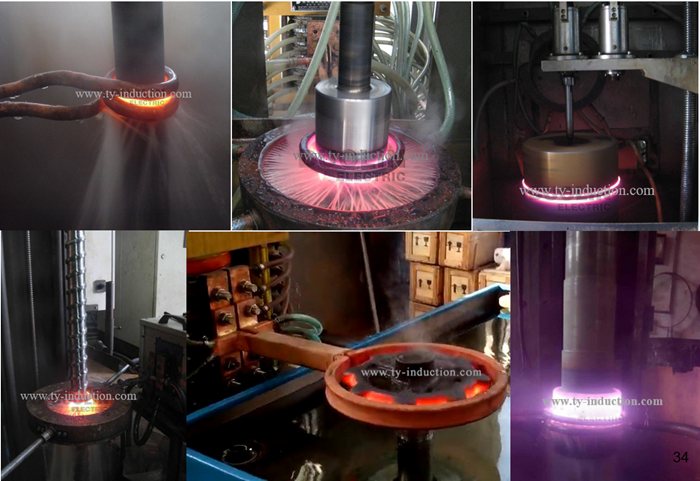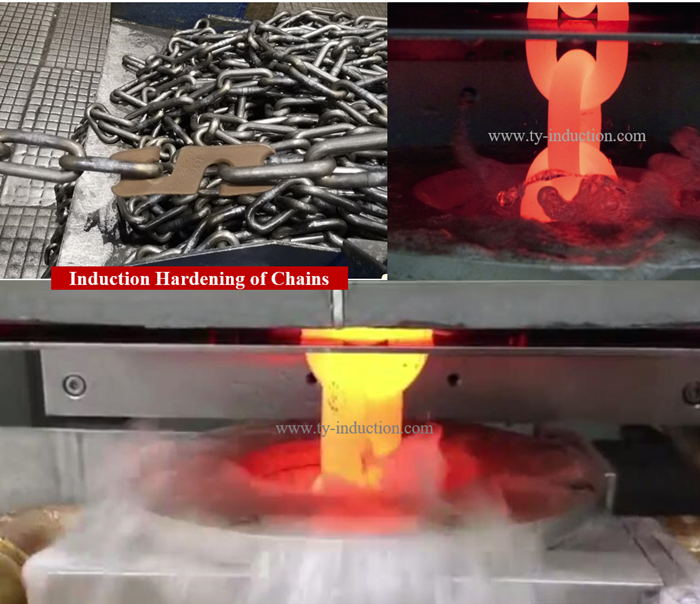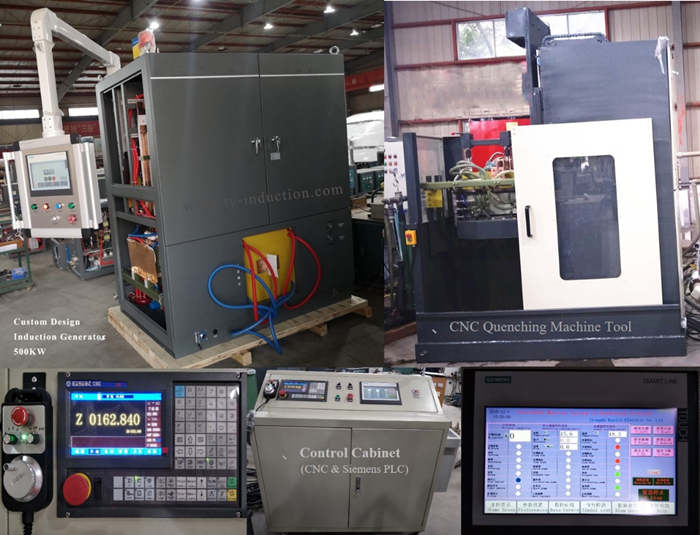How Does Induction Hardening Work to Improve And Preserve Wear Resistance?
September 28, 2023
In the modern metal manufacturing industry, the properties of metal materials such as wear resistance, hardness, and corrosion resistance are of great concern. For many metal parts, wear resistance is crucial.
Hardening can increase the hardness of materials and is the most common method to improve the wear resistance of metal materials. Induction hardening is a heat treatment method that is widely used and recognized in modern metal manufacturing. The surface hardening of steel parts, such as automobile parts, mechanical parts, tools, etc., can be treated by induction hardening to improve wear resistance.

Induction Hardening uses the principle of induction heating. The alternating magnetic field generated by the induction coil acts on the surface of the workpiece, causing it to quickly heat up to a critical temperature and then cool rapidly, thereby achieving surface quenching of steel parts.

In order to improve the wear resistance of metal parts, we first need high-quality and advanced Induction Hardening Equipment.

Compared with traditional flame hardening and salt bath quenching, Induction Hardening Machine has many advantages: fast processing speed and short heating and cooling times, which can improve production efficiency; the heating process is well controllable and can achieve uniform distribution of surface and internal temperatures of the workpiece, reduce the occurrence of deformation and cracks; save energy and reduce environmental pollution.
Improving the wear resistance of metal parts is inseparable from hardening process technology. Six factors that improve the wear resistance and other properties of steel products during Induction Hardening Work.
1. Uniform Heating: Maintaining tightly controlled induction heating temperatures results in uniform mechanical properties and greater consistency from part to part, even within a given part.
2. Rapid transfer: To ensure martensite formation, it is important to move the workpiece quickly into the induction hardening process to avoid premature, unintended formation of non-martensitic structures such as ferrite or bainite. The term "slow cooling" is used when there is a delay in the transfer of product to the quench cooler, resulting in a lower product temperature before quenching. High-performance mechanical properties cannot be achieved with relaxation quenching.
3. Adequate soaking: Ability to soak the entire length and cross-section of the workpiece at the target austenitizing temperature, thereby improving quality.
4. Maintain Induction Hardening Efficiency: Keeping products that are continuously induction heated into quench is critical to effectiveness. This includes piece-by-piece and along-piece temperature control. Uniform temperatures from front to back ensure greater efficiency. Additionally, using the correct media (water, oil, polymer, etc.) is critical to ensure that the induction hardening practice extracts heat at the required rate and minimizes thermal stresses generated during microstructural transformation. If induction quenching is too slow, the material may not achieve the required microstructure to meet performance requirements. In contrast, rates that are too aggressive can lead to undesirable thermal stresses or, worse, component cracking at elevated stress points.
5. Uniform induction quenching coverage: Uniform spraying means that the quenching fluid penetrates all sizes of products to the same depth. This removes heat and avoids the formation of a steam vapor barrier, which prevents heat transfer from the workpiece. Uniform coverage also provides constant agitation, pressure, and flow throughout the process and helps maintain straightness for many products throughout the process.
6. Uniform induction hardening exit temperature/tempering entry temperature: Modeling is particularly effective in determining the correct controls to achieve these temperatures. Large cross-section sizes can be quenched to the desired surface temperature; however, the core temperature of the product may be significantly higher. This often occurs in "spring back," where the product surface temperature will reheat after quenching when the core temperature is conducted back to the surface. Achieving a uniform post-quench temperature ensures that the desired microstructure is obtained through the entire cross-section of the part. Correct modeling ensures that components are heat-treated as required.
With good induction hardening, the real benefit to any steel parts manufacturer is that the end product is more reliable and capable of achieving higher levels of performance. Following a solid heat treatment path means the steel is stronger, tougher, and ultimately more capable, which may translate into higher loads or better tolerance of existing loads, increased fatigue strength, wear resistance, and resistance to Bending overload damage capability.
Enhance the durability of your components through advanced technology with TY. Our Induction Hardening processes not only improve surface hardness but also effectively preserve wear resistance, ensuring your materials withstand the test of time. Choose TY for superior performance and longevity in your hardened components right now!
Hot Products
Contact Us
Enquiry hotline:
+86 135 4128 7190
Email:
Address:
No.18,14th Floor, Building 2, No. 169 Zhongli Road, Banzhuyuan Subdistrict, Xindu District, Chengdu, Sichuan, China, Code:610000
Related Products
